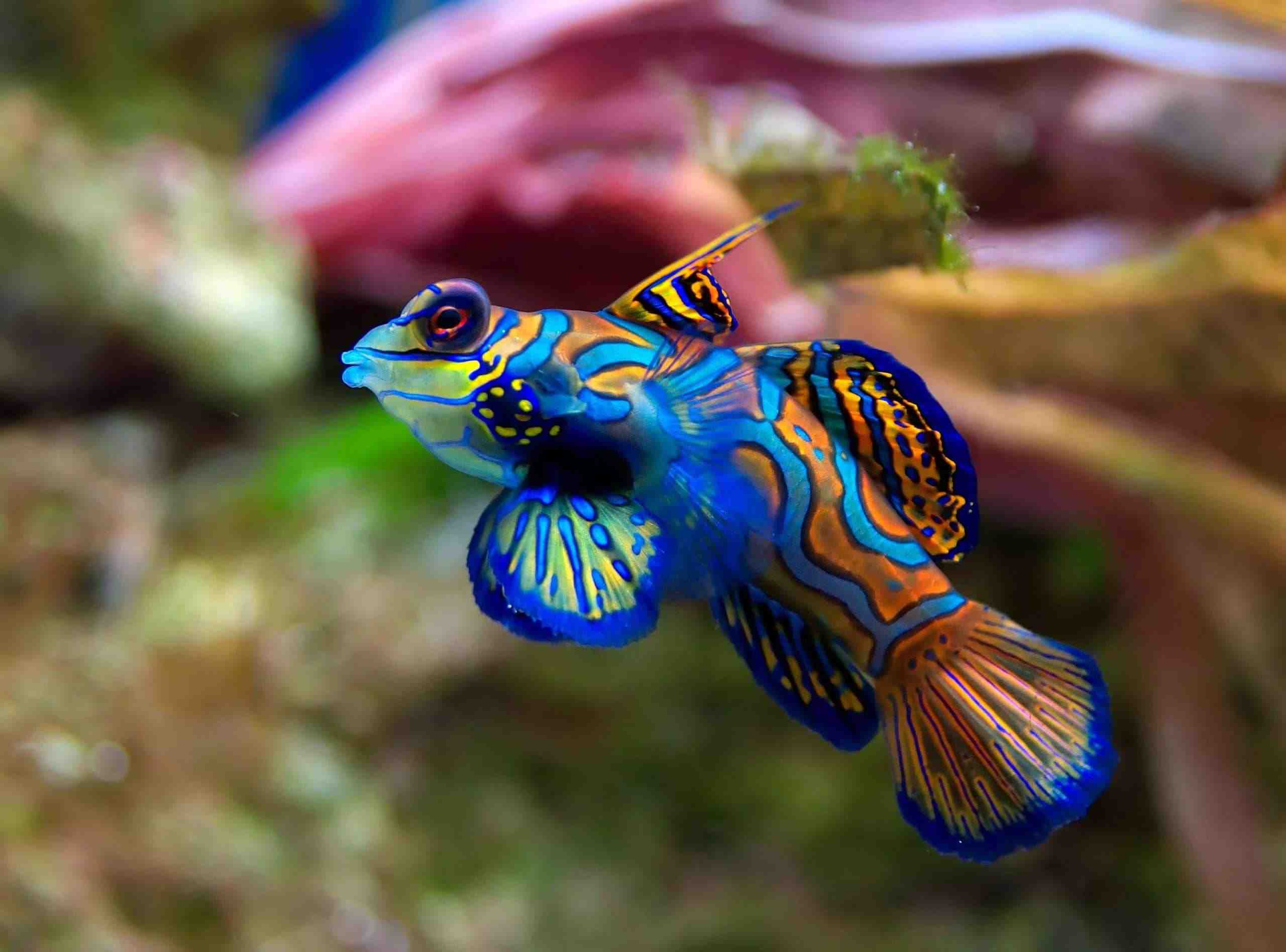Undoubtedly, freshwater fish are so beautiful to look at and many species have been adorned with unique color patterns like their colorful saltwater cousins. Whether you are a new or seasoned aquarist, it’s hard not to get hooked on freshwater aquarium fish and their unique personalities.
Every species of fish might have different prerequisites due to their living requirements. However, a lot of species could be put together in a community tank, atmosphere, and peacefully coexist with one another.
As there are many breeds to pick from, most beginner aquarists could have the same problem to pick the ideal fish species for their first aquarium plan. We’ve assembled a list of the 10 best freshwater fish that are fantastic for your aquarium!
Table of Contents
1. Neon Tetra
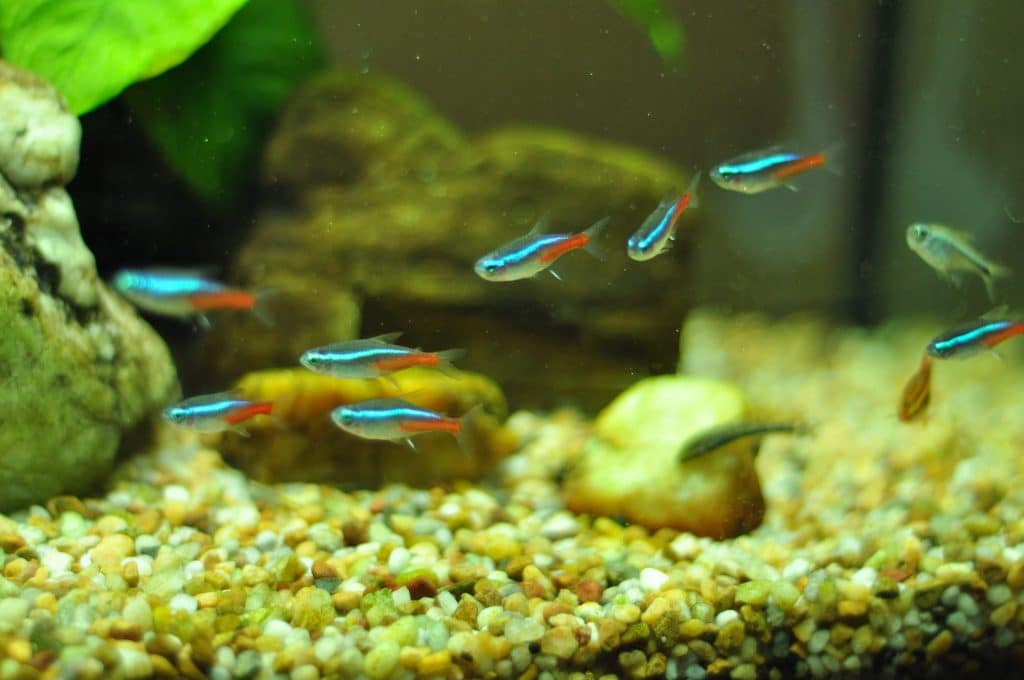
Lively, colorful, enchanting, and easy to care for, it is no wonder that these tetras are so popular. Neon tetras (Paracheirodon innesi) are a little schooling fish discovered in tropical freshwater ponds and streams in South America.
It created a stir when first introduced in the 1930s and is still sought after by aquarium enthusiasts these days. Place this fish among contrasting plants along with a dark background and you’ll have a vibrant and beautiful aquarium.
They are a communal fish and should constantly be stored in groups of a half dozen or more. They make a nice addition to a larger community aquarium, because they are peaceful and simple to take care of.
Pros:
- They are among the most peaceful tetras and a very desirable community fish.
- When its environment is well-maintained the neon tetra is easy to keep and will resist illness. An epidemic of illness can frequently be restricted to just one or a couple of fishes.
- Do well at a community tank as long as the other species aren’t big or aggressive.
Cons:
- They are considered somewhat tricky to breed.
- Tetra can develop diseases with no known cause. This might affects on survival rate of your tetra.
2. Molly Fish
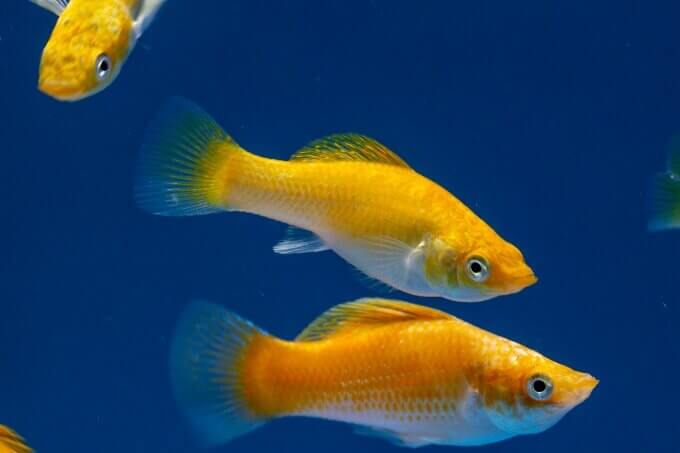
Molly fish are playful, cheerful, and quite entertaining for most aquarist enthusiasts. They’re a fun addition to any aquarium: lovely, active, and lively. Mollies are tiny tropical fish that originate in freshwater streams and swamps or, sometimes, the ocean.
The genus Mollienesia, where the name mollie has been derived, has been re-classified since Poecilia and is deemed to be in exactly the identical genus as the guppy. A small molly is significantly bigger than the normal guppy, and a few of the biggest molly forms are real giants.
If you intend on getting mollies on your tank then you should remember they can grow up to an inch bigger than your betta fish.
Pros:
- A molly gives even more allure to aquariums that have fish of others pecies, as it creates the environment more enchanting and cheerful.
- Another advantage of getting mollies is how easy breeding is. Even in captivity, reproduction is quite simple: simply put a male and a female in precisely the identical aquarium.
Cons:
- When they find fish of the same species, they leave the lively side apart and become aggressive.
- They need to live together with different mollies or else they will become stressed.
- In the event the owner of the aquarium doesn’t take great care in managing their breeding, this could cause an overcrowding issue.
3. Guppy
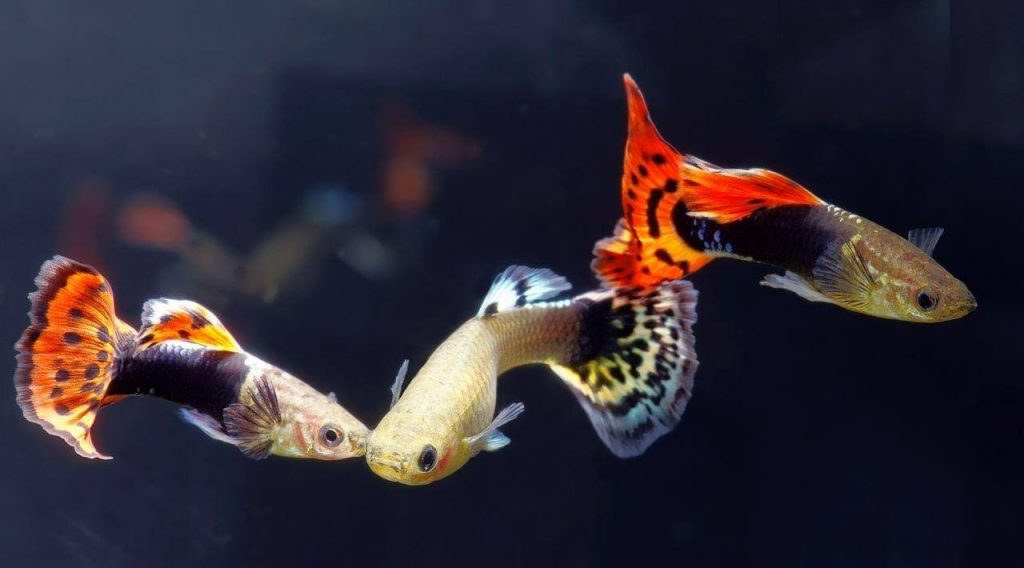
There is fish with all of the pros of famous goldfish but using a lot more flare, and that’s the guppy. There are dozens of varieties with distinct coloration and tail shapes. Guppy also has a complete spectrum, ranging from bright solid red, colorful, blue, to albino.
Pros:
- It is possible that a guppy keeper might end up creating his or her own unusual colours by introducing different colour guppies that breed.
- Guppies do not take up a lot of room, so you don’t require a big aquarium.
- Guppies are unbelievably easy to keep living. Just keep the tank clean and also supply them with meals, and they are happy.
- Breeding guppies is simple and females can give birth to 30-40 fry each month.
Cons:
- To prevent their habitat by becoming entangled, guppies have evolved to eat their own young.
- There is a risk of feeding live food to your Guppy, it’s the fact that it may get affected by diseases.
4. Betta Fish
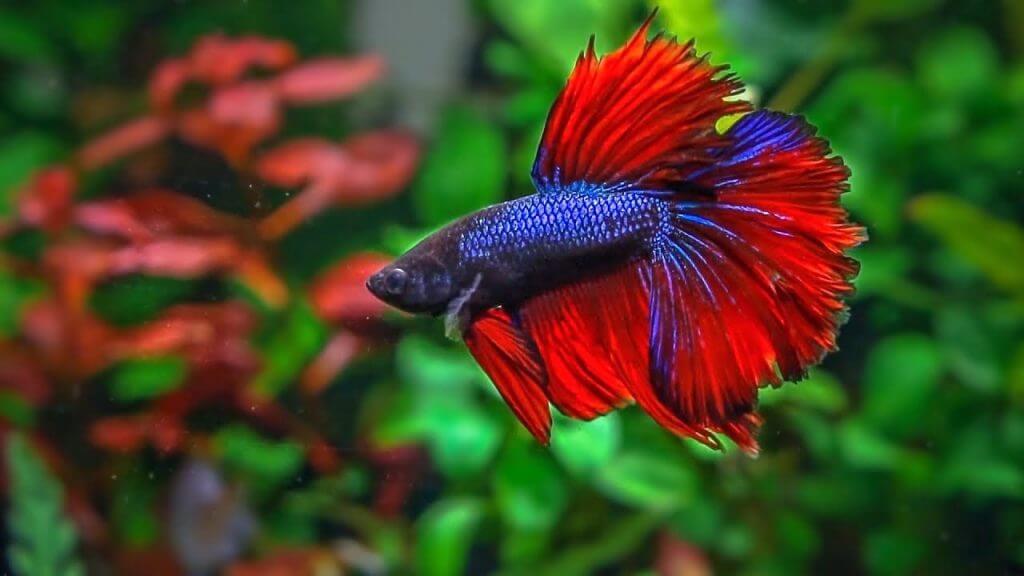
Bettas are known for their jewel-bright colors and magnificent fins and come in a wide array of morphs. Though bettas can tolerate modest distances and bad water quality, however, they really do well in a small aquarium with consistent water changes.
Bettas make nice pets, especially for first-time fish owners. They’re beautiful to see and are full of uniqueness.
Pros:
- Their long flowing fins and vivid colours are particularly beautiful fish and therefore are very fascinating to look at.
- Bettas are often recommended as excellent species for first-time fish owners because of their ease of care.
Cons:
- When your betta is continually bombarded with stressors, they can lose their vivid colors, and stress stripes may appear on their physique.
- Many bettas, particularly the males, have quite aggressive tendencies and will tend to fight with one another.
5. Zebra Danio

The Zebra Danio (a.k.a zebrafish) is a freshwater fish which originates from Southeast Asia. The zebra danio has invited many people to be the aquarist, graced community aquariums all over the world. Using its superbly striped, white and black zebra-patterned body, such fish are easy to spot.
Pros:
- Easy to recognized by its own distinctive horizontal stripes.
- Zebrafish are very tough and can withstand a lot of water temperatures and conditions.
Cons:
- Need water ecosystem to maintain them.
- If water temperatures are retained too low, and they have an inclination to become more susceptible to illness.
6. Dwarf Gourami
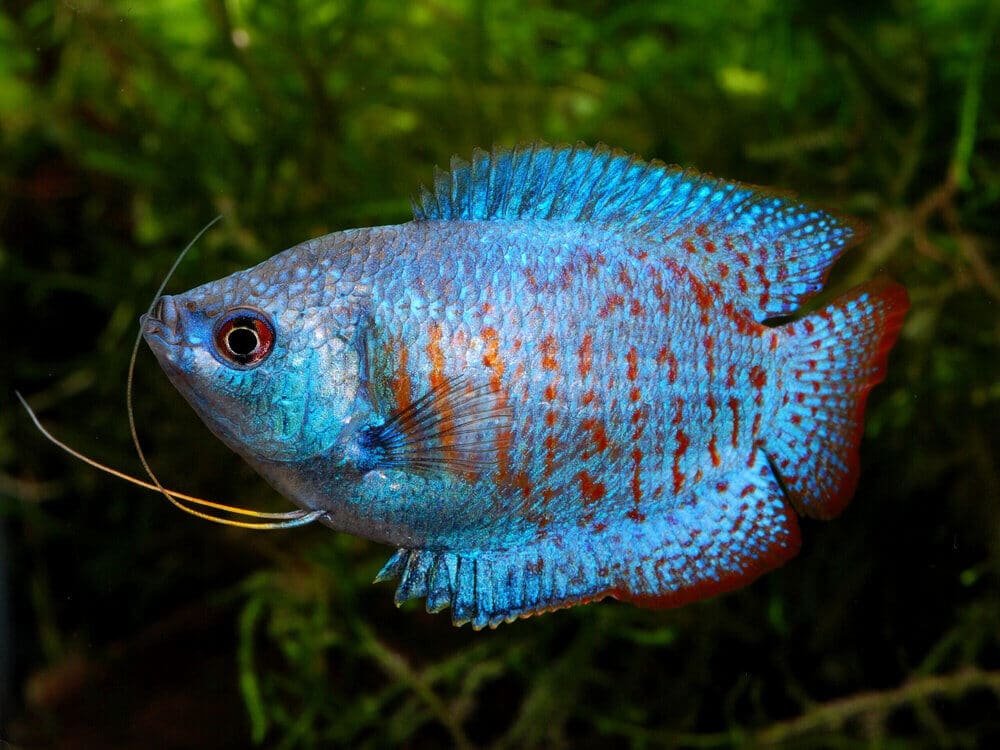
Its own title ‘dwarf’ suits this fish, as it is one of the smallest of this gouramis. Dwarf gouramis make an exemplary addition to the peaceful community tank. Even whilst the bigger species may get really boisterous, and so are best maintained in a semi-aggressive tank.
Dwarf gouramis include blue to flame red, using extensive variations between. In nature, gouramis eat insects, in captivity, they will eat freeze-dried food, vegetable tablets, flake food, and frozen food items.
Most gouramis are outside-oriented, so consequently possessing tall ones or plants that float at the surface helps make them feel at home.
Pros:
- This exotic fish creates a great addition for the calm community aquarium.
- Generally calm and can be kept together with different species that are not that huge or competitive.
Cons:
- Dwarf gouramis have an inclination to be aggressive towards each other, therefore they must normally be kept separately.
- When breeding, you might need more than one tank.
7. Cory Catfish

Cory Catfish are a few of the absolute most fascinating fish you are able to keep in your tank. Ordinarily fine sturdy and tempered, catfish could be discharged to just about any aquarium setting since they have a tendency to go together nicely with just about any fish.
There are a variety of species, sizes, and shades readily available, which means you may frequently find the ideal catfish to match your own present setup.
Pros:
- They are rather easy to take care of, and must really be fed sinking pellets like a nutritional supplement to the food they’ll scavenge by themselves.
- Cory Catfish keep the aquarium tidy by sucking food wastage and decaying plant matter.
- In case you are on the lookout to get a bottom-dwelling species to improve your tank, then catfish may be a fantastic alternative.
Cons:
- Cory Catfish sometimes make a bit of a shambles since they float through the substrate and then send algae along with other muck into the water.
- They have a carnivorous nature, then this is some of the fish at which you want to select tankmates which do not match its mouth.
8. Swordtails
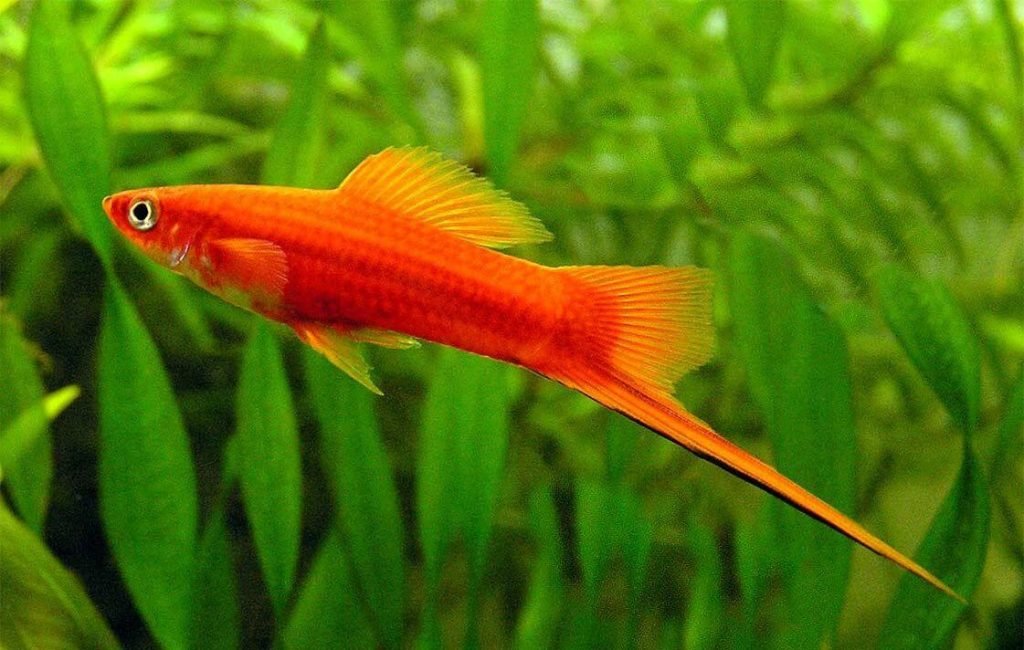
A lusty hardy and relatively easy to care for live-bearer, the swordtail is among the most widely used aquarium fish species among new aquarists. They have been extremely social and enjoy decent company, particularly when placed together with different swordtails or similar species that are passive.
It can be gotten in several color variations, as well as tail and fin variations. Even the swordtail is a good swimmer and also an accomplished jumper, plus it prefers to reside in smallish groups of four or more. A vibrant, darkened fish that looks amazing.
Pros:
- Isn’t difficult to provide whether the aquarium is adequately big.
- Swordtails are fairly sturdy and will survive in a range of aquarium requirements.
Cons:
- Once fully grown they can be quite agile and can out-compete a few smaller or less active species only for food.
- They are good jumpers and care ought to be taken to guarantee that the aquarium is closely covered.
9. Oscar

Oscars are amazing fish and also exhibit some of the most unique and fascinating behaviors. Because of the characteristic, Oscar sometimes called as an odd choice. They are lovely and smart fish and mostly kept by experienced fish keepers due to their character.
These fish can be a pleasure to keep in home aquarium but it is very important that you provide them with the appropriate tank set up to ensure that they thrive.
Pros:
- Oscar is one of the smartest fish can be kept in your tank.
- Look wise, amazing and colorful. They has a rounded tail along with vivid colours and patterns in its physique.
- Lifespan is very long. They could live up to 15 years with good maintenance and right diet.
Cons:
- Oscar fish are among the toughest fish to breed in captivity.
- Always in competition mode. Anything else that occupies, including their tankmates.
10. Angelfish
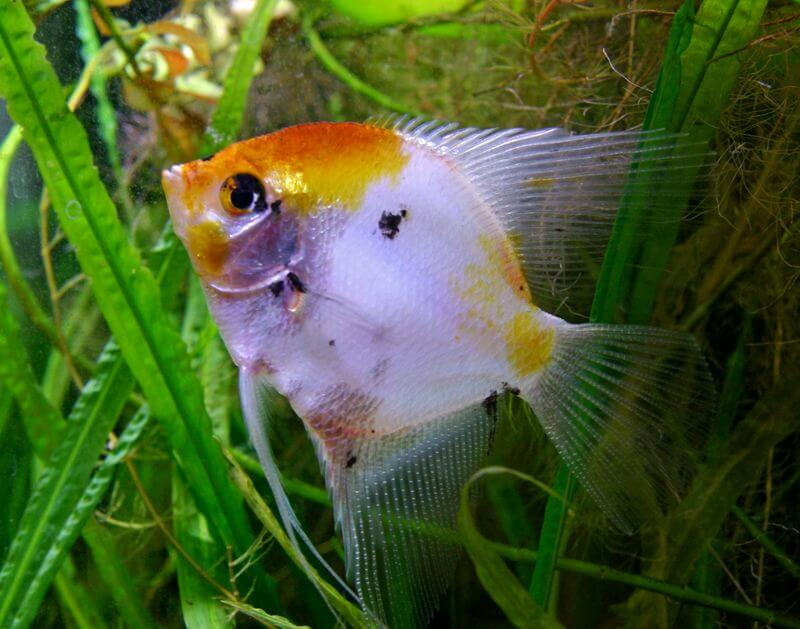
The awesome shape and lofty, serene, swimming style of angelfish are just some reasons why this fish is one of the hottest aquarium fish. Found in the wild, it’s obvious they’re well adapted to surviving in their native oceans, they prefer well-planted aquariums.
As a species, angelfish are generally fairly calm but they might well not be friends with very smaller species.
Pros:
- Come in a vast range of colors to fit just about any taste.
- These Fish will blend well and certainly will be quite harmonious with different fishes.
Cons:
- A bit more aggressive when protecting their spawn, plus they are recognized to go to war within territory whenever they are feeling bloated.
- Frequently fall victim to diseases they truly are prone to.
- Sensitive to extreme changes in water quality and temperature.
We hope this list could help you pick the right species. Remember that all of these freshwater fish are easy to care, and readily available in the fish store. Have a great time finding your fish and deciding what type is ideal for you personally!
In bad times, an aquarium may help you a lot. You can make a great view of your aquarium by adding some of the funniest, trendiest, and most exotic species of freshwater fish. Even though we can research the common behavior patterns of a species, there are always exceptions to this theory.
But at the end of your afternoon, fish have different characteristics and every so often they act in many different ways. The best approach is to anticipate the unexpected and be ready to separate fish that do not go along. Reveal all about the fish you think deserve to be on the list in the comments below and don’t forget to share with other aquarists!
Cheers…
TankQuarium.com

